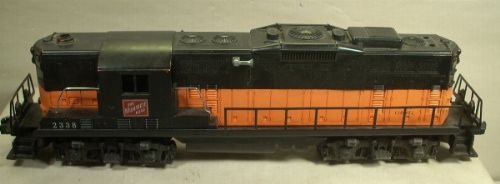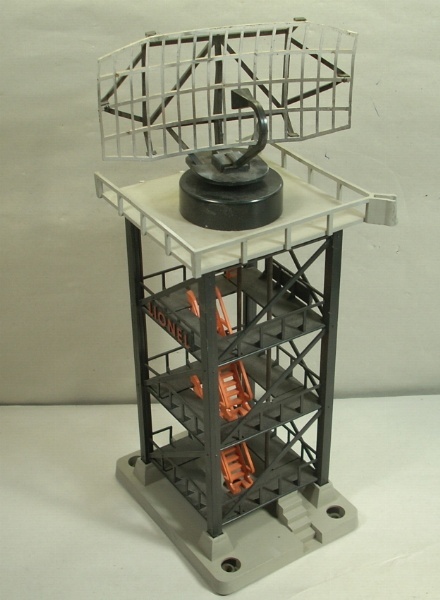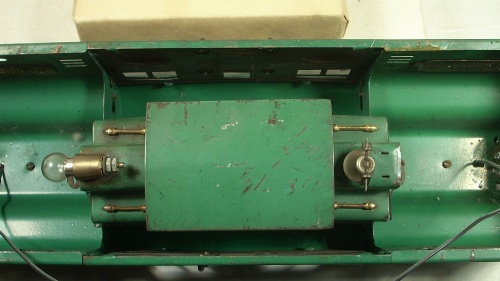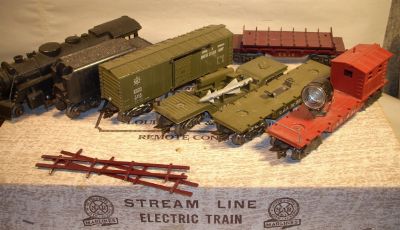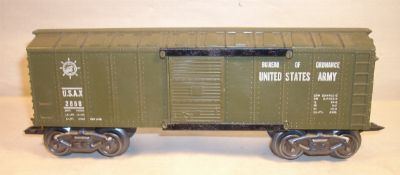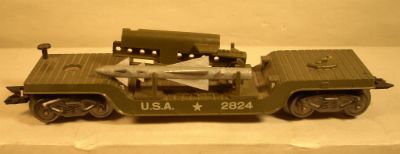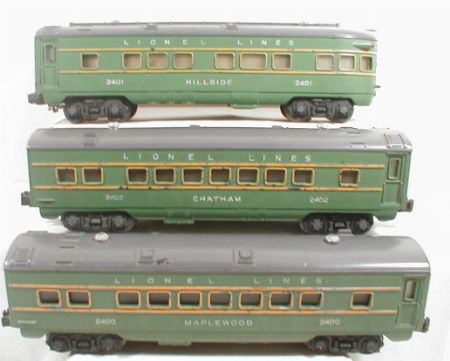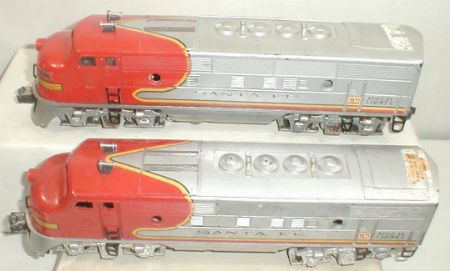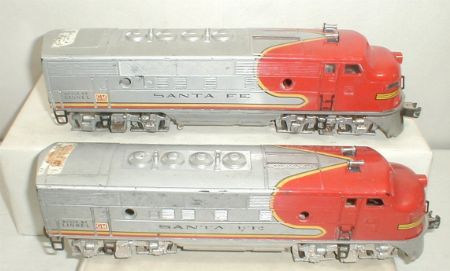
In 1937 Lionel introduced the famous 700E Hudson locomotive. This was a scale 1:48 model of the New York Central steam locomotive. The assembled 700E came with a walnut display stand and was the first commercially produced die cast O scale locomotive made.
The 700E Hudson was very popular with the newly emerging O scale operators. By the mid 1930s a movement towards scale or realistic locomotives had grown up in the US and many operators built kits. Factory
assembled scale locomotives and cars weren’t available. So the Lionel Hudson was a first.
In 1939 to accommodate O scalers who wanted to build their own locomotive Lionel began offering the 700E in kit form. 5 kits built the locomotive and tender, and a sixth kit contained a whistle for the tender.
The kits could be built for inside or outside third rail.
To make it easier for modelers on a budget, Lionel sold the kits separately. Some modelers built the locomotive and never painted it black so there are a few original gray 700K locos out there. (The one shown at the top of this page is an original kit locomotive assembled and unpainted.)
I always wanted to build a 700K so since I had acquired most of the parts I decided to build my own Hudson kit.
The first kit 700K-1 came with the frame with wheels mounted, the crossheads and valve gear need to be mounted.
I lost the picture of the frame before adding parts, but you can see it under the trimmed boiler shown in the third kit.
This portion was a mess. Because I was using parts from junk Hudsons I used the best of each part I had and bought the missing parts. The frame I used came from a 763E so this loco has blind center drivers.
I had Don Hagar replace one of the wheels and straighten the frame. The wheel Don replaced broke in the mail on the way back so the frame had to make a return trip. Don didn’t charge me for the shipping or the work required to replace the wheel.
This whole process of getting the frame ready to mount the valve gear took 2 months acquiring the parts and dealing with the broken wheels.
Then I sat down to start putting the parts in kit 1 on, and the cranks and crankshafts on the parts engines were either modified or broken. I ordered replacements from Sal Olsen.
Sal sent me the wrong rivets to attach the cranks to the crankshafts, and one of the cranks was defective. Another month as the parts went back and forth.
Everything sat in boxes for months waiting for the parts. Some of the time was occupied by other pursuits, but it was quite frustrating to sit down and start working only to realize something was missing or broken.
If I wasn’t already bald I would have been pulling out my hair.
Anyway I finally got kit 1 put together. Here’s both sides after the assembly of kit 1:


The second kit 700K-2 included the motor, e unit, collectors – inside and outside, the headlight and a lead weight.
The second kit went together in minutes. I test ran the loco to make sure everything was correct only to find a short in the e-unit. I don’t have an e-unit to cannibalize for parts so I decided to temporarily wire the engine without the e-unit so it only runs forward.
Here’s photos of both sides after the parts in kit 2 have been added to the frame:


The third kit contained the boiler and cab assembly and all the trim. Below is a photo of a Hudsonboiler without the trim installed.

I added the trim to the boiler while I was waiting for the frame parts. Here’s both sides of the boiler after mounting trim. I set the boiler on the frame before the parts in kits 1 and 2 were added to the frame for these pictures.


The next step is mounting the boiler to the frame. Another short showed in a wire coming off a brush at this point. The original wire is cloth covered and it was pinched between the cab and the frame. I’ll
rewire it when I put the new e-unit in.
Here’s pictures of the trimmed cab mounted on the frame with valve gear from step 2:


Kit 700K-4 contained the ash pan, ladders, coupler and pilot, boiler front, lead and trailing trucks and some small bits of valve gear that attach to the boiler.
These parts were easy to mount. Because I used a 763E frame, I don’t have the holes to mount the coupler chain assembly. When I pull it apart to mount the e-unit I’ll drill the holes and mount the coupler chain. The boiler front also needs the lower grab irons.
I did get the rest of the loco assembled, and here’s pictures of each side:


Now I am supposed to take the whole thing apart and paint it black. Not going to happen. I do have the decals and will letter it in the future.
Kit 700K-5 contains the tender, and kit 700K-6 contained the whistle. I have a tender in my box of parts, but I don’t want to repaint a nice looking tender so this loco won’t have a matching tender until I find a restorable 700T tender. Got one?
